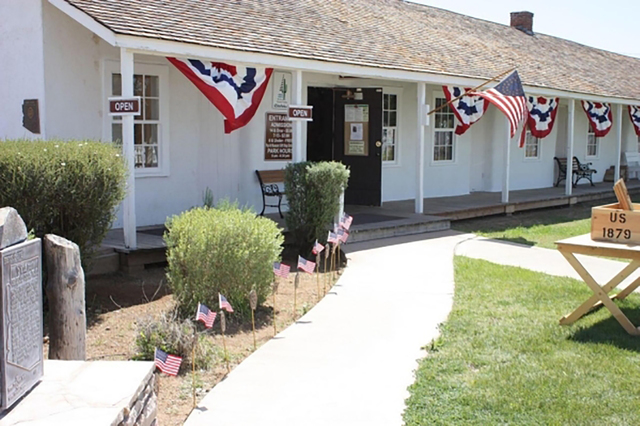Arizona’s Fort Verde preserves key piece of frontier history

Fort Verde State Historic Park in central Arizona protects an important piece of Old West history, the best preserved of a string of U.S. Army forts that guarded settlers and travelers during the turbulent period after the Civil War, especially during the Indian Wars of the 1870s and ’80s.
The park shows what life on the Arizona frontier was like for soldiers, military families, Indian scouts and early settlers.
It is located at the edge of the town of Camp Verde on the scenic Verde River, 285 miles from Las Vegas. To get there from Southern Nevada, follow U.S. Highway 93 into Arizona, picking up Interstate 40 in Kingman. Head east on I-40 to state Route 89, the road to Prescott. Continue east from Prescott on state Route 169 to reach Interstate 17. Follow the freeway north nine miles to the exit onto state Route 260. Turn right along the river to reach Camp Verde a couple of miles downstream.
Fort Verde is open from 9 a.m. to 5 p.m. year-round except Christmas Day. A small entrance fee applies. Facilities include a picnic area and restrooms near the cluster of four original buildings left from 22 structures that used to frame the central parade ground of the fort.
Acquaint yourself with the history of the fort as you explore the exhibits in the headquarters museum. Outside, follow the self-guided walking tour of the three restored buildings that served as officers’ quarters 145 years ago. They now display period equipment, frontier relics and living quarters with antique furnishings. Constructed from 1871 to 1873, the fort replaced a couple of prior camps that had been established in unhealthy, swampy locations.
Renamed Fort Verde in 1879, the post was home base for two cavalry units and two infantry units, including the famed Buffalo Soldiers. The fort witnessed a parade of frontier figures and was part of events that changed the future of the region.
Soldiers from Fort Verde constructed a key wagon road connecting Fort Whipple near Prescott, the territorial capital, with Fort Apache to the east, which allowed troops and equipment to be transported more easily.
Fort Verde served as a staging area for military actions against hostile tribesmen. Soldiers there were taxed with enforcing the federal Indian policy mandating the reservation system as a means of controlling the native people of the West.
Under Al Sieber, famous head of scouts, the army used native scouts recruited from area tribes to hunt renegades, often operating from Fort Verde. The last major battle of the northern Apache Wars occurred in 1882 at Big Wash 37 miles east of the fort. Fifty marauding renegades were killed or subdued and returned to their reservation. Tribal leaders surrendered to Gen. George Crook on the commander’s front porch at the fort.
The post’s active life spanned about 20 years. The last of the military left in 1891 and the government sold the fort at auction in 1899. Many of the buildings were torn down for construction materials.
The town of Camp Verde grew up protected by the soldiers. Today it is a hub for recreation with six state parks, four national monuments, ghost towns, a scenic railroad and the free-flowing Verde River all within an hour’s drive. The area is popular with kayakers, bikers, hikers, birders and anglers.
Margo Bartlett Pesek’s Trip of the Week column appears on Sundays.